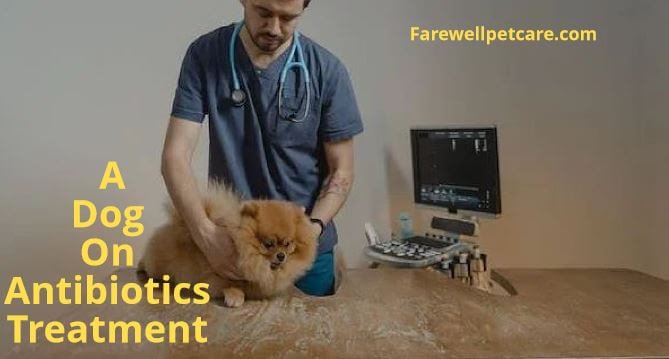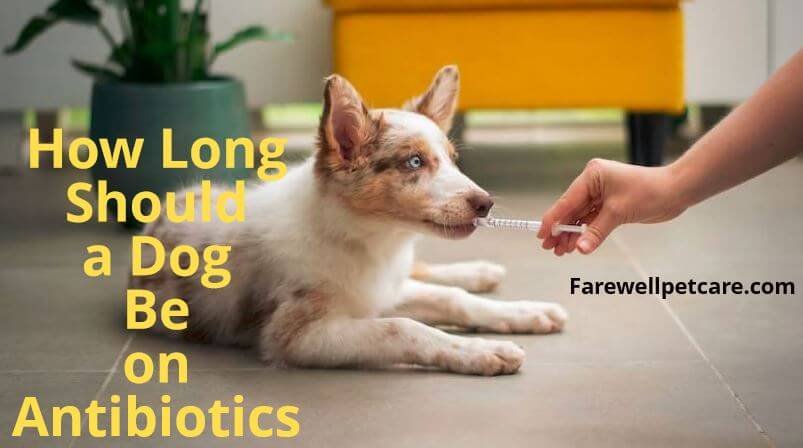Bacterial infections are quite prevalent in pets, and most dogs will be on antibiotic treatment at some point. If your furry friend has been on meds more than a few times in a year, it’s natural to worry about possible misuse of antibiotics, which can lead to drug resistance. A question frequently asked by most pet parents is, “How long should a dog be on antibiotics?”
A dog should be on antibiotics for 5 to 14 days. The ideal duration for antibiotic therapy highly depends on the diagnosis and the prescribed medication. Always follow your vet’s directions and seek consultation if you don’t see improvement in at least a week.
Read on as we will pop the big question: How long should a dog be on antibiotics? We will also analyze the factors that influence the duration of a treatment plan and the symptoms of an antibiotic overdose.
What are Antibiotics?
Antimicrobials is the name used to describe medications that are used to fight against the many different microbes, such as viruses, bacteria, fungi, parasites and other microorganisms, which can cause illness and disease. One group of antimicrobials is known as antibiotics (or antibacterials) and they specifically refer to drugs that kill or control bacteria.
4 Factors to Consider When Giving Dogs Antibiotics
Experts in medicine have widely used antibiotics since penicillin was first discovered in 1928. Although a lot has evolved, mainly in the approaches for treating and preventing diseases, the main principles of antibiotic usage have remained largely intact.
Here are four main factors your vet will consider when choosing an antibiotic and deciding the ideal length of treatment.
Find Out: Why Do Dogs Lick Blankets? 6 Reasons and How to Stop It
1. Correct Choice of Drugs

Antibiotics are only effective at treating bacteria-related diseases. They have zero effect on parasites, viruses, fungi, and various other disease-causing microbes. This makes it crucial to have your dog diagnosed before prescribing antibiotics.
Some bacterial infections antibiotics can treat in dogs include but are not limited to the following:
- Respiratory infections
- Urinary tract infections
- Ear infections
- Gastrointestinal infections
- Skin infections
- Eye infections
- Tissue infections (often arise from injuries or after surgery)
Your vet will choose the right antibiotic prescription based on the diagnosed ailment and your pet’s symptoms. There are various classifications of antibiotics ideal for dogs, the common ones include:
- Penicillin
- Aminoglycosides
- Quinolones
- Tetracycline
- Cephalosporin
- Cephamycin
- Macrolides
- Sulfonamides
Generally, a prescription that can effectively treat a UTI in dogs will not necessarily cure a punctured paw. Therefore, choosing the proper medication makes a huge difference in ensuring your pet recovers as expected.
Also Read: What Is a Tri-Colored American Bully? Find Out
2. Proper Dosage
After determining the right prescription for your dog, your vet will also consider the correct dosage. The main aspects influencing the ideal dosage include the dog’s age and weight.
For instance, the correct dosage for amoxicillin is given at a ratio of 5 to 10 mg for every pound of weight. Therefore, a 10-pound (4.54 kg) dog requires 50 to 100 mg of amoxicillin to treat a bacterial infection.
On the other hand, a 60-pound (27.22 kg) dog will need 300 to 600 mg of the same drug to treat the same illness.
To be safe, avoid purchasing over-the-counter antibiotics in online or land-based pet stores. You should consult a qualified vet to determine the ideal dose for effective treatment.
3. Proper Medication Intervals
It’s imperative to administer antibiotics to your pet at defined intervals. If your vet prescribes a drug to be taken once daily, ensure your pup takes its meds at the same time each day until the completion of treatment.
To achieve a consistent and effective tissue level of the medicine, here are the ideal medication intervals based on different prescriptions.
- Once daily: Administer after every 24 hours.
- Twice daily: Administer after every 12 hours.
- Thrice daily: Administer after every 8 hours.
Most antibiotics are fast-acting. They take effect in an hour or two and remain in the system for up to 24 hours.
Moreover, your pet should start feeling much better in a few days. However, you should continue giving the medication as prescribed and at the recommended intervals unless otherwise directed.
4. Length of Treatment
When it comes to the length of antibiotic treatments for both humans and dogs, shorter is better. However, the number of days your dog must take antibiotics highly depends on the diagnosis and the prescribed medicine. Different ailments require different lengths of antibiotic treatments to kill or control bacterial growth.
Your vet will decide the ideal treatment plan that can help achieve the most favorable outcome. Generally, the length of antibiotic treatments for dogs can range between 5 and 14 days.
It’s also common for some treatment plans to stretch for months, especially when treating something as complex as a bacterial lung infection.
Antibiotics are life-saving. On the flip side, overuse or misuse can lead to antibacterial resistance. This is when the targeted bacteria adapts and evolves to make it resistant to traditional antibiotic therapy. If your dog fails to go through the treatment duration as recommended, it will be harder to treat the same infection if it recurs.
What Are the Symptoms of Too Much Antibiotics in Dogs?

The symptoms of too much antibiotics in dogs include vomiting, diarrhea, inappetence, and drooling. If a dog ingests antibiotics in toxic amounts, it could also display metabolic and central nervous system symptoms, including seizures, tremors, skin lesions, kidney failure, and liver failure.
A dog can overdose on antibiotics if you accidentally administer too much of a prescribed drug. An overdose can also occur if your pet knocks over a poorly stored antibiotic container. As a responsible pet parent, you must keep all drugs in hard-to-reach places and ensure the proper dosage of prescription meds.
Some gastrointestinal symptoms of an antibiotic overdose in dogs include the following:
- Vomiting
- Loss of appetite
- Drooling
- Diarrhea
Dogs can also experience the following metabolic and central nervous system symptoms because of a severe antibiotic overdose:
- Skin lesions
- Kidney failure
- Liver failure
- Seizures
- Tremors
A severe overdose can be life-threatening, especially if it goes unaddressed. If you suspect your dog has had too much antibiotics, call your regular vet immediately or drive to the nearest pet emergency center.
You can also contact ASPCA Animal Poison Control at (888) 426-4435 or the Pet Poison Helpline at (855) 764-7661.
Can I Give My Dog Antibiotics Without Food?
You can give your dog antibiotics with or without food. If your pet won’t eat, it’s perfectly okay to administer the meds as prescribed. However, whether an antibiotic is in tablet, capsule, or liquid form, taking it on an empty stomach increases the risk of side effects like nausea and vomiting.
Antibiotics for pets are safe for consumption, even on an empty stomach. However, most vets recommend taking medication with food to minimize side effects like nausea, vomiting, and diarrhea.
If your dog won’t eat, it doesn’t hurt to ask your vet whether a specific prescription has special considerations regarding how it should be consumed.
So, what if your dog throws up the medicine when dosed on an empty tummy?
Don’t administer an additional dosage. Instead, try administering the next dose with food. Antibiotics work fast, and even a slight improvement in your dog’s health could encourage it to take a few bites before the next dosage.
How Long Does It Take to Cure a Bacterial Infection in Dogs?
It takes 5 to 14 days to cure a bacterial infection in dogs. Antibiotics start working 1 to 2 hours after ingestion and deliver notable relief from symptoms in a few days. However, you can only be sure that a bacterial infection is cured once your pup completes the recommended course of treatment.
There is a significant difference between feeling better and being cured. Although antibiotics are fast-acting, they can’t cure a bacterial infection overnight. The drugs kick into action in just a few hours and remain potent in the dog’s body for up to 24 hours.
Depending on your pet’s state of health, the prescribed antibiotic, and the recommended treatment length, it should feel much better in just a few days.
However, enjoying relief from symptoms doesn’t necessarily mean the pet is cured. It must go through the entire course of antibiotics to enjoy long-lasting relief and lower the reinfection risk.
So, How Long Should a Dog Be on Antibiotics?
The duration a dog should be on antibiotics depends on the sickness and the type of dog. It narrows down to the diagnosis, weight, and severity of symptoms.
Consulting a qualified vet should be your first line of defense to keep your furry friend healthy.
Although this post contains fact-based information about the ideal length of antibiotic therapy, it doesn’t make up for a visit or call to your vet.
Remember, an antibiotic overdose or under-dose can lead to drug resistance or cause the recurrence of an infection.

